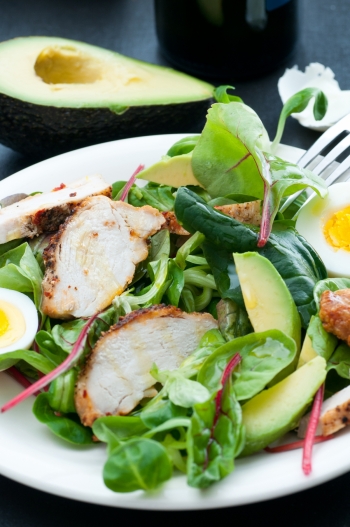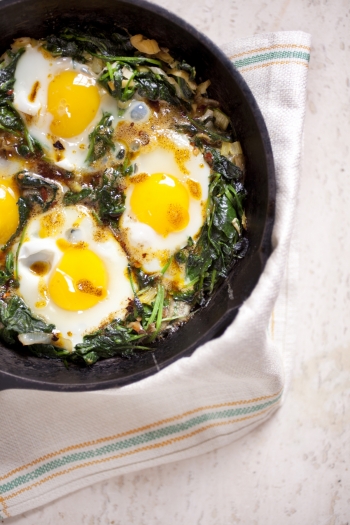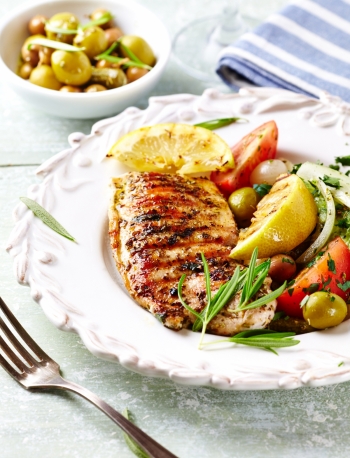Keto, Paleo, and Whole30
Keto

The ketogenic diet is very trendy right now because it is simple to start, intuitive, and works well for weight loss and some health conditions. The Atkins Diet and other very low carbohydrate ketogenic-style eating plans have been around for decades, but keto has been recently re-branded and there is a surge of interest in this eating style.
Eating “keto” typically means eating about 20 grams or less of “net” carbohydrate a day (net carbohydrate means less the fiber found in foods). However, for those who are highly active, they may be able to eat 50 grams or more of carbohydrate each day and remain in ketosis. Eating such a small amount of carbohydrate forces the body to make a metabolic switch to use ketones as fuel for quick energy rather than its typical default fuel choice which is carbohydrate. Studies have found that ketosis is not a magic weight loss potion, but rather, it is simply difficult to overeat while following a very low carbohydrate diet. While eating “keto,” a person is primarily consuming meat, low-starch vegetables, high-fat dairy, and added fats. As a result, the diet is automatically cleaned up to be of a higher quality by eliminating most junk foods that are typically rich in carbohydrate. Highly palatable foods that may normally trigger overeating are removed.
Eating keto can come with its pitfalls, as some experience decreased mood and energy levels. Marathon runners have been shown to perform well in ketosis but athletes in sports requiring bursts of energy, such as basketball, have reported performance decreases following a ketogenic diet. Being in ketosis can affect your hormones and temporarily slow down the function of your thyroid, so if energy levels suffer while eating keto-style, it doesn’t hurt to increase carbohydrates (with healthy, real food sources) until feeling well again and energy levels are better. Eating keto also can have an effect on the gut and digestion because it partially starves the bacteria that live in the gut. For some, this can actually be a benefit and improve digestion, but for others they may experience digestive problems and constipation. For many, it may be wise to supplement with a product with good quality pre-biotic fiber to feed beneficial gut bacteria (this is different from a probiotic supplement which contains only the beneficial live bacteria). For anyone choosing to eat keto, it is best to include a copious amount of low-starch vegetables, and listen to feedback from your body as an indication of whether it’s the right eating plan for you.

Paleo
The Paleo-style diet is a favorite of mine for many reasons. For one, it eliminates many of the unhealthy foods that contribute to people’s health troubles. Most people lose weight when they choose to eat a Paleo template, but that is just the beginning of the many benefits it can offer. The “Paleo” diet has evolved over the years, but it generally restricts all processed foods, added sugars, grains, beans, legumes (including potatoes), and dairy. More liberal versions of the diet (sometimes termed “Primal”) allow potatoes, beans, legumes (especially sprouted), as well as some dairy products. A hallmark of the diet is the avoidance of grains, especially wheat and other gluten-containing grains. Similar to keto, the biggest advantage to this eating template is the elimination of highly processed foods. Those with auto-immune disorders and digestive problems often see health improvements after converting to a Paleo template because of the elimination of foods that are likely causing inflammation. Because of the elimination of grains, legumes, dairy, added sugars, and processed foods most will see a significant decrease in the amount of carbohydrate they eat even though Paleo is not technically low carbohydrate diet. Many who eat a Paleo-style diet also eat liberally of saturated fats from animal foods and coconut oil. I usually recommend a modest amount of healthy fats with this approach such as ghee (clarified butter), coconut oil, or extra virgin olive oil for cooking, making food palatable, and keeping calories in check. For more information about a Paleo eating template, check out Chris Kresser’s book The Paleo Cure or visit his blog at ChrisKresser.com.
Whole30
 Whole30 is a short-term diet plan lasting 30 days that invokes a zero-tolerance policy for restricted foods. The foods allowed are almost identical to a Paleo template, but there are a few additional restrictions. No grains, legumes, dairy, alcohol, added sugars of any kind (natural or not), additives from processing (such as MSG, sulfites, or carrageenan), or baked goods (even if they are made of technically approved ingredients). The diet does allow animal proteins, nuts, seeds, potatoes, healthy added fats, fruits, and veggies. The consumption of homemade bone broth is also encouraged. The diet tends to be naturally low in carbohydrate because of the food categories it restricts.
Whole30 is a short-term diet plan lasting 30 days that invokes a zero-tolerance policy for restricted foods. The foods allowed are almost identical to a Paleo template, but there are a few additional restrictions. No grains, legumes, dairy, alcohol, added sugars of any kind (natural or not), additives from processing (such as MSG, sulfites, or carrageenan), or baked goods (even if they are made of technically approved ingredients). The diet does allow animal proteins, nuts, seeds, potatoes, healthy added fats, fruits, and veggies. The consumption of homemade bone broth is also encouraged. The diet tends to be naturally low in carbohydrate because of the food categories it restricts. Whole30 is helpful as an elimination diet to help tease out any food intolerances a person may possess. Most people lose a significant amount of weight during a Whole30, but the program rules state that you are not to weigh yourself during the 30-day diet period. At the end of a Whole30, it is best to slowly reintroduce forbidden categories of foods to identify if these foods were perhaps causing digestive difficulties or other health problems. For instance, one might add dairy back in the first week after completion, and next reintroduce grains or gluten-containing foods to identify potential problems. And, of course, at the end of a Whole30, it is best to transition to a generally healthy diet plan that maintains the same good habits of avoiding processed foods and added sugars while majoring on plant foods and healthy protein sources. For a detailed description of program rules, see Whole30.com.
Before You Begin
[accordion id = "2713"]
Pan-Seared Chicken with Mushroom-Sage and Coconut Cream Sauce

Ingredients
4 bone-in skin on chicken breasts
Salt and pepper
1 tablespoon refined coconut oil
8 ounces white button or cremini mushrooms, washed, trimmed, and sliced thin
¼ cup chopped fresh sage
1 small onion, chopped fine
3/4 cup regular coconut milk
3/4 cup chicken broth
Don't forget to check your weekly ad or the latest digital coupons for extra savings on the ingredients!
Directions
- Pat chicken dry with paper towels and season with salt and pepper. Heat coconut oil in 12-inch skillet over medium-high heat until just smoking. Cook chicken, skin side down, until well browned, about 5 minutes. Reduce heat to medium, cover, and cook until chicken registers 160 degrees, about 15 minutes. Transfer to plate and tent loosely with aluminum foil.
- Return now-empty skillet to medium-high heat. Add mushrooms, sage, shallot, ¼ teaspoon salt, and ¼ teaspoon pepper and cook, stirring occasionally, until any mushroom juice has evaporated, about 5 minutes. Add coconut milk and broth and cook until slightly thickened, about 3 minutes. Season with salt and pepper to taste. Pour sauce over chicken. Serve.
- Serving suggestion: Serve with steamed “riced” cauliflower and roasted Brussels sprouts for a complete real fresh, real delicious low carb meal.

